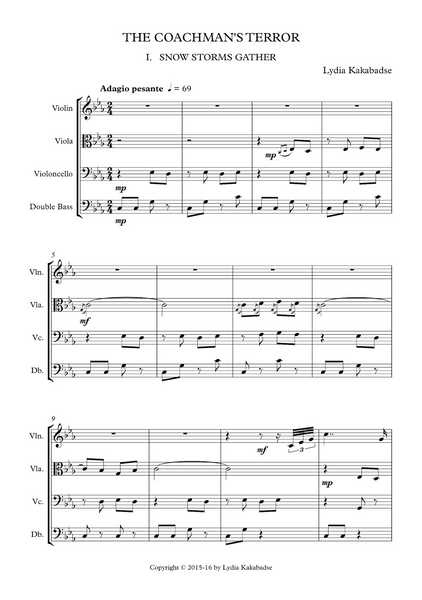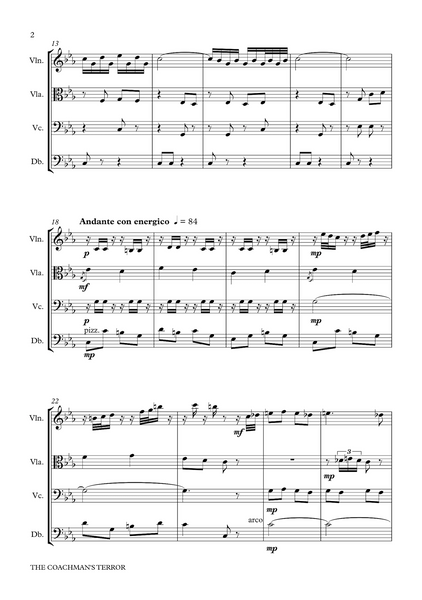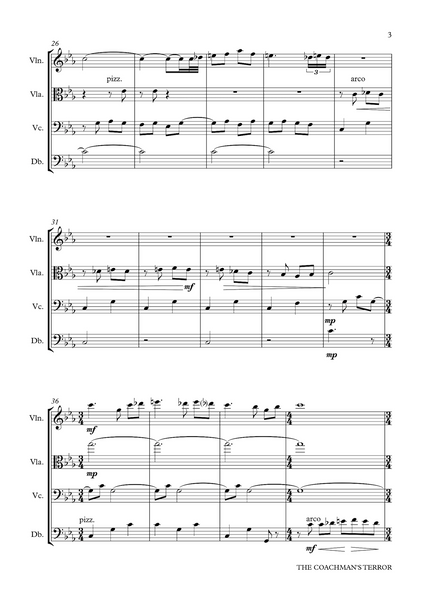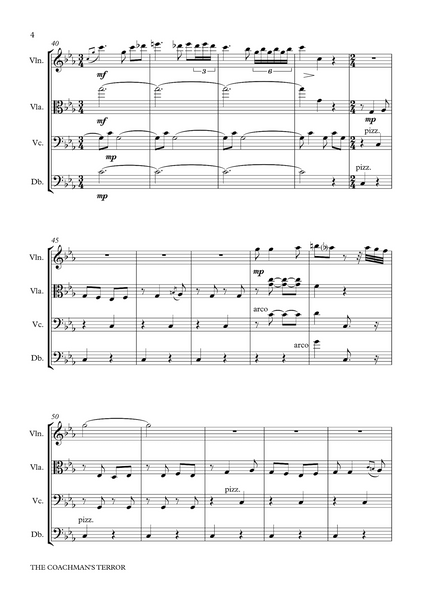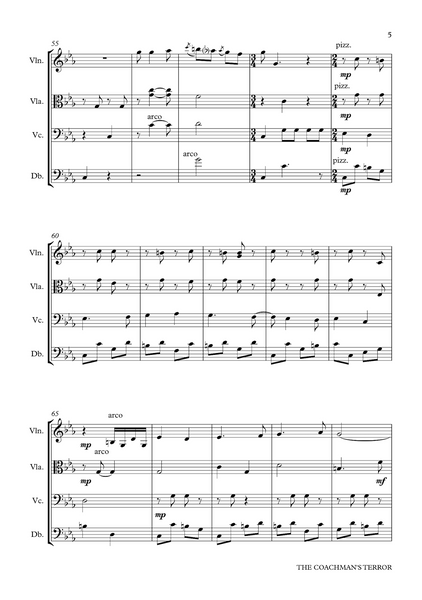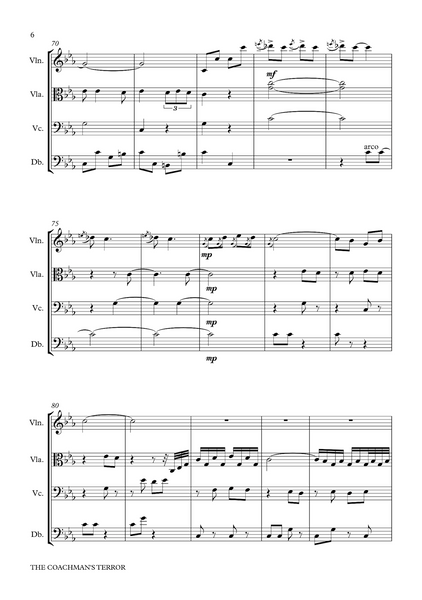Lydia Kakabadse: The Coachman’s Terror – for “alternative” string quartet (NXP084)
This is a sheet music edition of The Coachman’s Terror by the composer Lydia Kakabadse.
Sheet music for “alternative” string quartet (violin, viola, cello, double bass)
Duration: ca. 18 minutes
Score: 37 pages
Parts: 35 pages
Preface and Programme Notes
Inspired by Alexander Pushkin’s powerfully atmospheric poem Devils, The Coachman’s Terror was completed in 2016. Set in Russian winter, a coachman drives a carriage through blizzard conditions amid swirling howling snows where heaven and night are blurred into one.
1st movement – snowstorms gather
Beginning adagio pesante, the bass and cello set the scene with a basso ostinato phrase, representing the steady gait of the horses. The pace quickens and, as a flurry of flying snow lights up the skies, an eerie melody played in the high register of the violin, pervades the atmosphere. Expressed by a series of syncopated patterns, the coachman attempts to gain control of the horses and there is a return to the opening basso ostinato phrase, but this is short-lived. The coachman repeatedly sounds the latten bells to warn of impending danger -characterized by a series of upper string quavers, each preceded by an acciaccatura – but spooked by the whirling snows, the terrified horses bolt. Following a frenetic arpeggio passage culminating in a fortissimo climax, there is a sudden silence, broken by a faint sound.
2nd movement – stranded amidst swirling snows
This movement is characterized by each of the instruments playing fast semi-quaver sextuplets- at times one tone apart – representing the swirling snows and biting winds. Beneath an open fourth tremolo accompaniment in the upper strings, the cello announces the main theme, which is later taken up by the violin against a pizzicato syncopated bass and a fast contrary-motion scale on the viola and cello. The bass adds to the ominous atmosphere by playing a passage tremolo sul ponticello. The snowstorm suddenly quietens down as the main theme is heard again on the violin in a new minor key and repeated on the cello, but there is a sense of foreboding as the semi-quaver sextuplets start up once more.
3rd movement – evil spirits gather round
Played misterioso and in the low register of each instrument, the steady advance of evil spirits towards the motionless coach is marked by the syncopated beat of the bass and cello. The main theme, first announced by the viola and then taken up by the violin, is later varied with embellishments by both instruments. The eeriness of this movement is heightened by the use of tone and semi-tone slides with a sudden strong accent on the landing note. Following a key change from G minor to C minor, there is more use of syncopated rhythms and some forceful playing resulting in a more spirited mood where swarms of evil spirits gather round ever closer.
4th movement – a landscape so desolate
The bass, representing a lone figure in a bleak and barren wilderness, plays the introduction with bare cello accompaniment. The violin and viola are muted throughout, conveying a rather uneasy atmosphere. Despite some dialogue between the violin and bass as well as low and very high register playing and tempo changes, the feeling of despair and desolation cannot be shaken off and any escape from this vast forlorn waste seems doomed.
5th movement – straying into the unknown
The cello announces the main theme, which is meandering in nature and reflective of the coach straying from the track and retracing its course. This theme is taken up by the violin and repeated with variations. Following changes in tempo, the coach comes to a halt and the pitiful tinkle of latten bells becomes more and more distant. The heavy sound of shadowy figures approaching in the blurry haze is marked by the bass repeatedly playing bottom F, whilst the cello and viola maintain a syncopated rhythm in their low registers and the violin soars above with the high-pitched sound of a plaintive song …







